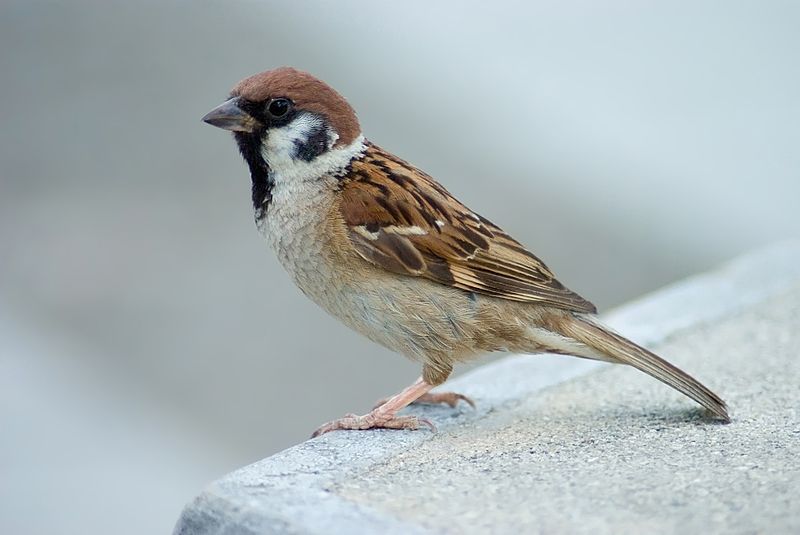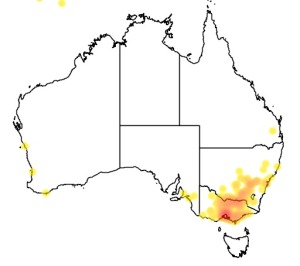Colours
Distinguishing features
The adult's crown and nape are rich chestnut, and there is a kidney-shaped black ear patch on each pure white cheek; the chin, throat, and the area between the bill and throat are black. The upperparts are light brown, streaked with black, and the brown wings have two distinct narrow white bars. The legs are pale brown, and the bill is lead-blue in summer, becoming almost black in winter.
There are no plumage differences between the sexes; the juvenile also resembles the adult, although the colours tend to be duller. (Wikipedia)
Size
- From 12.5 cm to 14 cm (Length of specimen)
Wingspan
- Up to 21 cm
Synonyms
Distribution
Local abundance
- Australia: In Australia, it is present in Melbourne, towns in central and northern Victoria and some centres in the Riverina region of New South Wales. It is a prohibited species in Western Australia, where it often arrives on ships from Southeast Asia. (Wikipedia)
Diet
It is a predominantly seed and grain eating bird which feeds on the ground in flocks, often with other species. It eats weed seeds, such as chickweeds and goosefoot, spilled grain, and it may also visit feeding stations, especially for peanuts. It will also feed on invertebrates, especially during the breeding season when the young are fed mainly on animal food; it takes insects, woodlice, millipedes, centipedes, spiders and harvestmen.
Adults use a variety of wetlands when foraging for invertebrate prey to feed nestlings, and aquatic sites play a key role in providing adequate diversity and availability of suitable invertebrate prey to allow successful chick rearing throughout the long breeding season of this multi-brooded species. (Wikipedia)


